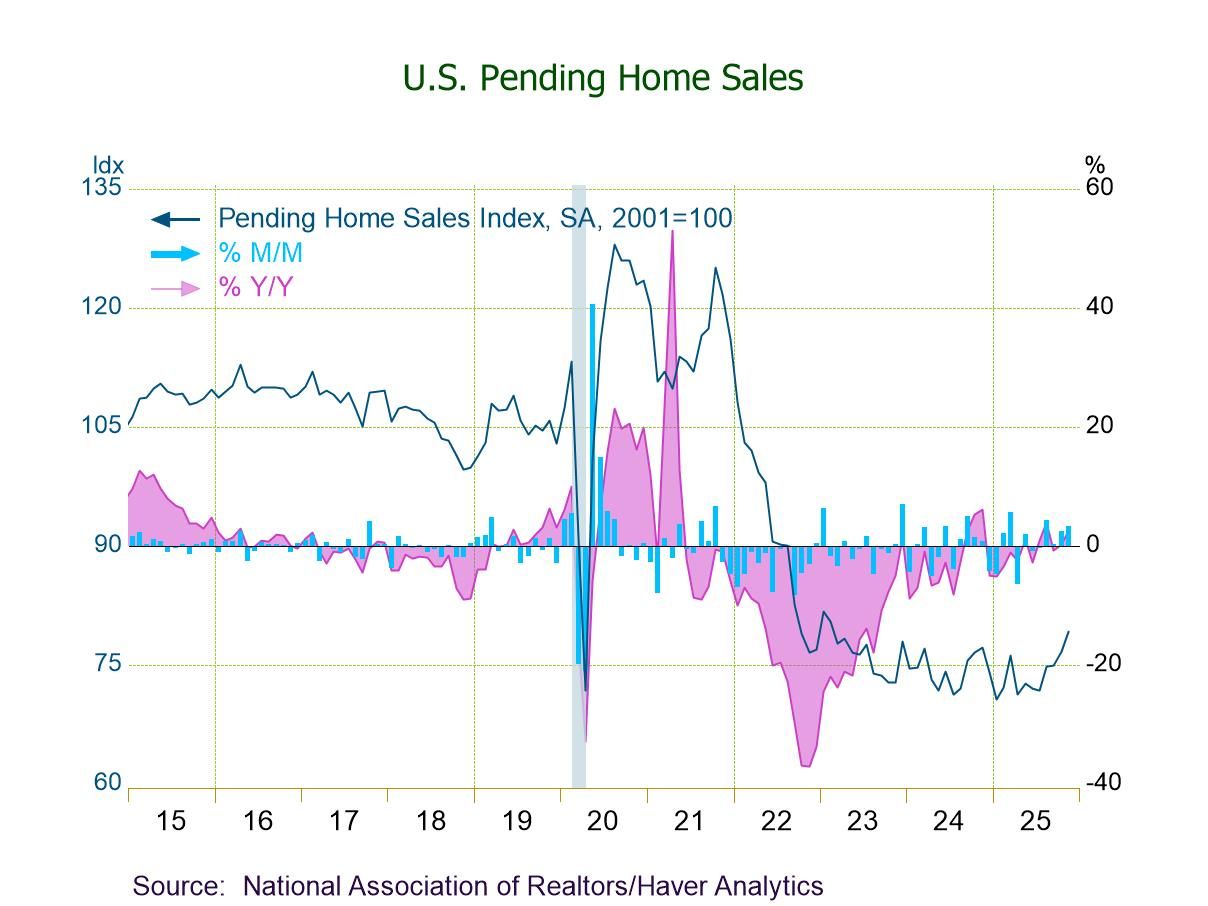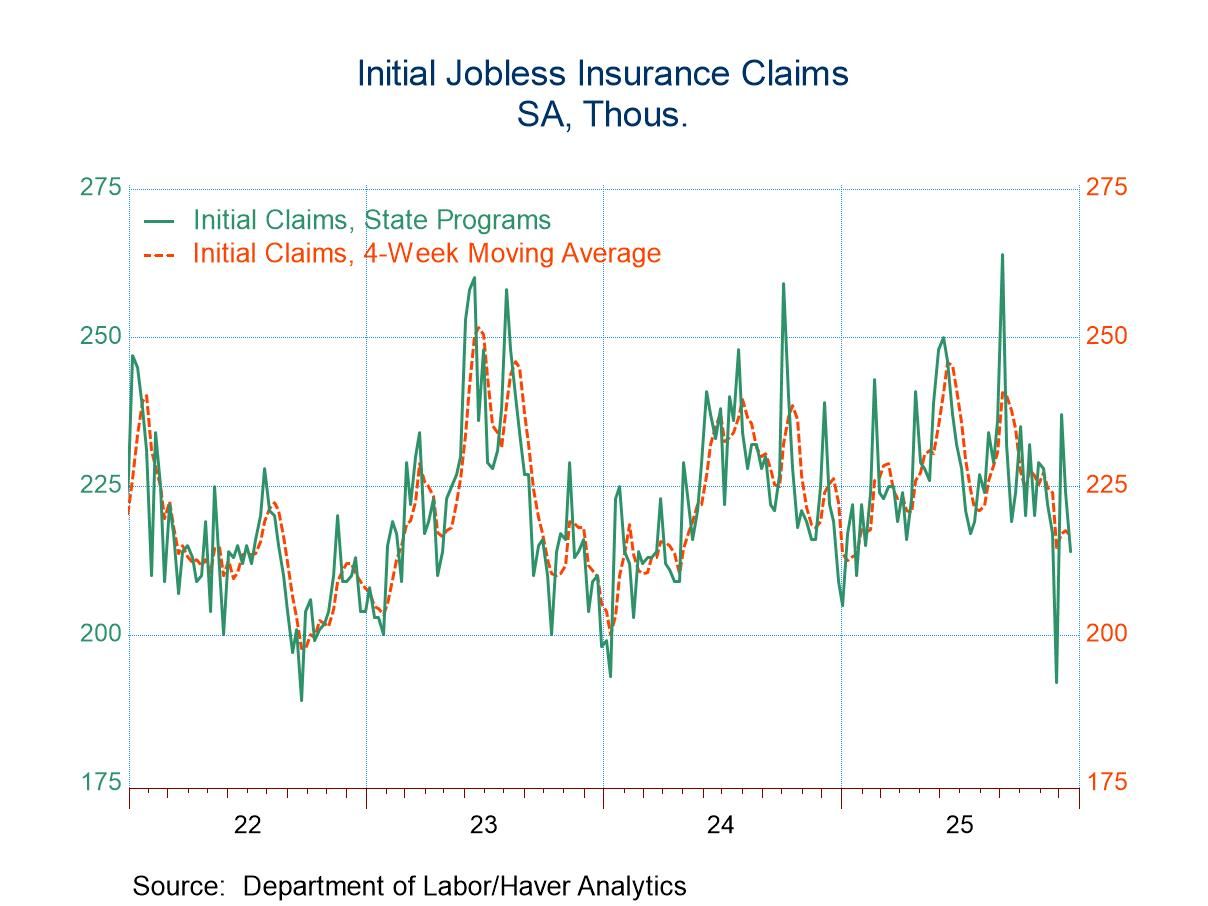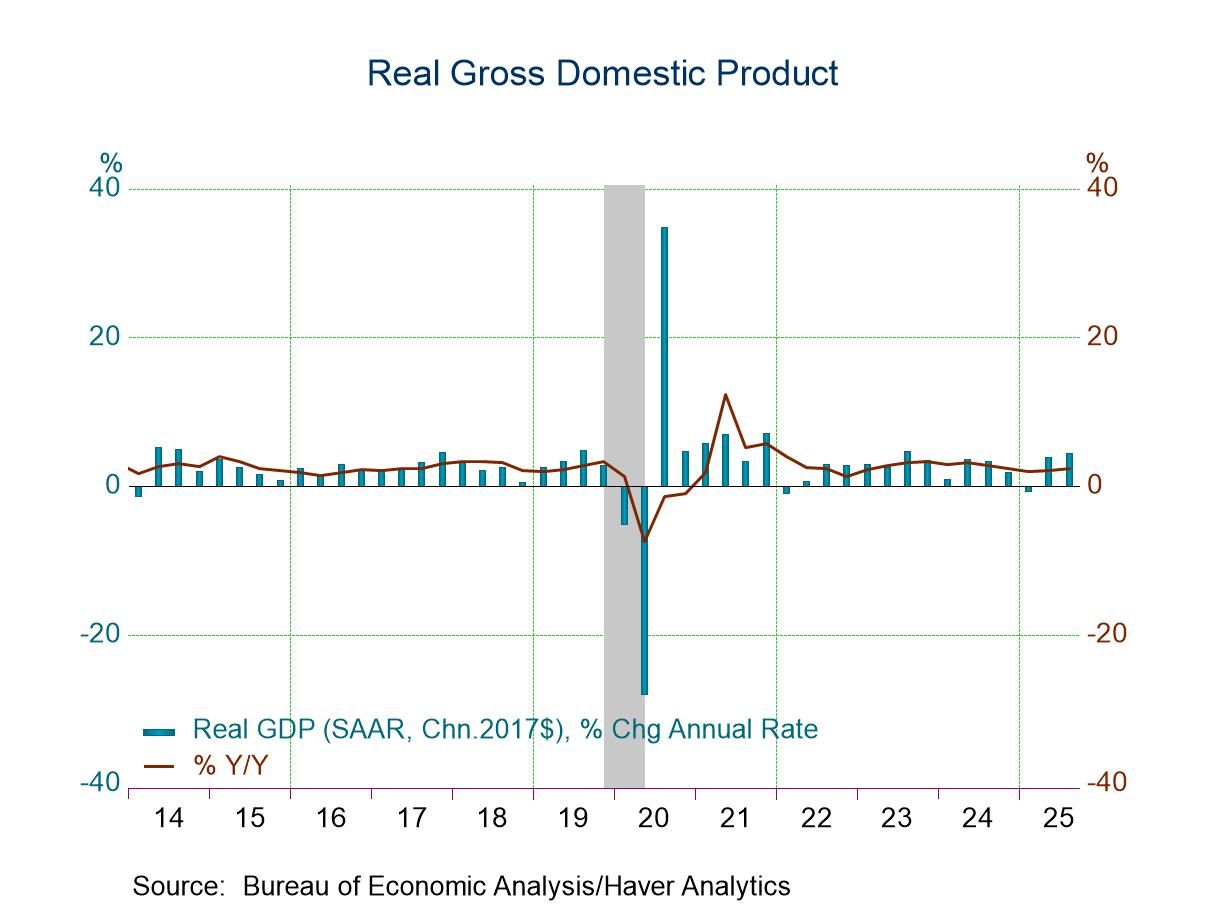Japan's IP Jumps in November

Both headline and manufacturing IP trends show steady growth acceleration from 12-months to six-months to three-months. One year ago, both overall IP and manufacturing IP were imploding, falling at a rate of 3.5% to 4% over the previous 12-months.
Two months into the third quarter (quarter-to-date; QTD) trends for IP are mixed. Manufacturing IP is advancing in the QTD at a 1.7% annualized rate. However, overall IP is falling at a 1.4% annualized rate. There is still a good deal of slack in the system as overall and manufacturing IP are still some eight percentage points below their respective past cycle peaks.
Despite the strength in the sequential growth rates taking growth back farther to just before Covid struck the global economy, overall Japanese IP is lower by 0.8% than it was in January 2020. Manufacturing output is lower by 1.4%.
Product group trends Consumer goods, investment goods, and intermediate goods output all increased in November. Consumer and intermediate goods output both rise strongly for two months running. Output in each of the three sectors fell in September with consumer goods and intermediate goods output both down sharply in September.
Consumer goods trends show output in an accelerating mode from 12-months to six-months to three-months. Intermediate goods show strength but stop just short of posting a sequential acceleration. Investment goods trends lag the trends of the other sectors. In the QTD only consumer goods among the manufacturing sectors show an output increase with intermediate goods and investment goods output still slipping in the evolving quarter.
Mining and utilities both show more weakness than the manufacturing sectors. Both mining and utilities show declines in November. Mining declines over 12 months, six months and three months while utilities decline on two of those three horizons. On a QTD basis, however, both mining and utilities are rising in Q4.
The product trends show mostly weakness compared to levels achieved in January 2020. Utilities usage is the exception as it is higher by two percentage points from that mark; investment goods output is another minor exception as output there is higher by one half of one percentage point (over 22-months…) with all other product groups showing net declines on the horizon.
Japan's IP jumped in November, rising strongly for the second month running after logging a steep drop in September.

On balance, Japan is still struggling. It is linked to two important trading partners that are experiencing very different conditions. Japan's largest trade partner is China, a country that has set for itself unenviable goal of ‘zero Covid' and is embroiled in a never-ending series of shutdowns, lockups, and restrictions and now even orders people to close their windows and has adopted a policy to spray disinfectant helter-skelter in some cities. All these are actions that look like something is being done but create destruction and probably have next to no impact on the virus spread. That's how totalitarianism works. In for penny, in for a pounding…
Japan's other important trade partner, the United States, is growing much faster. Still, that along has not been enough pull for Japan to jump start its own moribund economy. Of course, ongoing supply chain issues and product shortages are contributing factors as well. Japan's recent Tankan report did show some progress but not robustness. Japan continues to slog its way toward better growth in a process of fits and starts more than one of steady progress.
Robert Brusca
AuthorMore in Author Profile »Robert A. Brusca is Chief Economist of Fact and Opinion Economics, a consulting firm he founded in Manhattan. He has been an economist on Wall Street for over 25 years. He has visited central banking and large institutional clients in over 30 countries in his career as an economist. Mr. Brusca was a Divisional Research Chief at the Federal Reserve Bank of NY (Chief of the International Financial markets Division), a Fed Watcher at Irving Trust and Chief Economist at Nikko Securities International. He is widely quoted and appears in various media. Mr. Brusca holds an MA and Ph.D. in economics from Michigan State University and a BA in Economics from the University of Michigan. His research pursues his strong interests in non aligned policy economics as well as international economics. FAO Economics’ research targets investors to assist them in making better investment decisions in stocks, bonds and in a variety of international assets. The company does not manage money and has no conflicts in giving economic advice.






